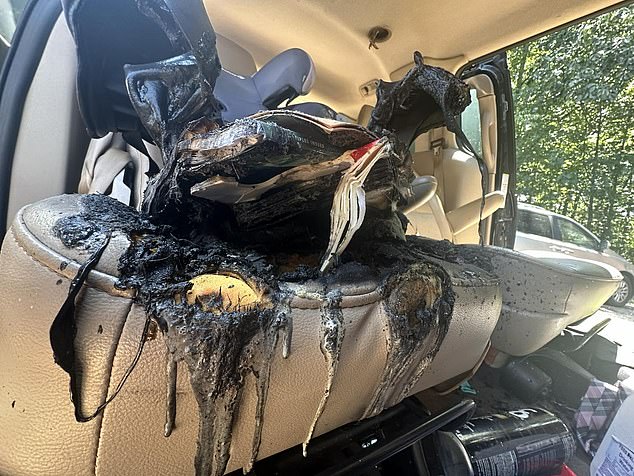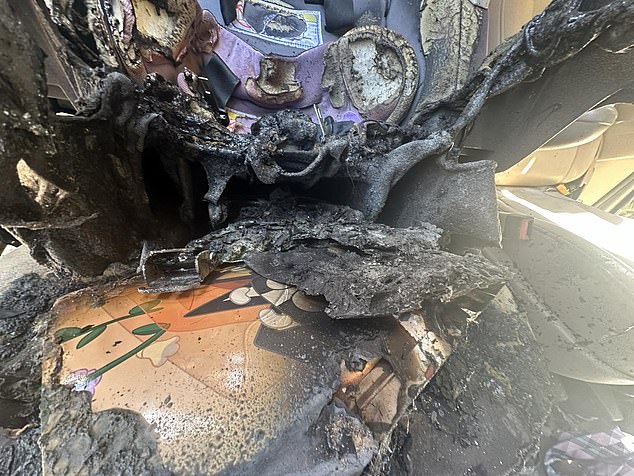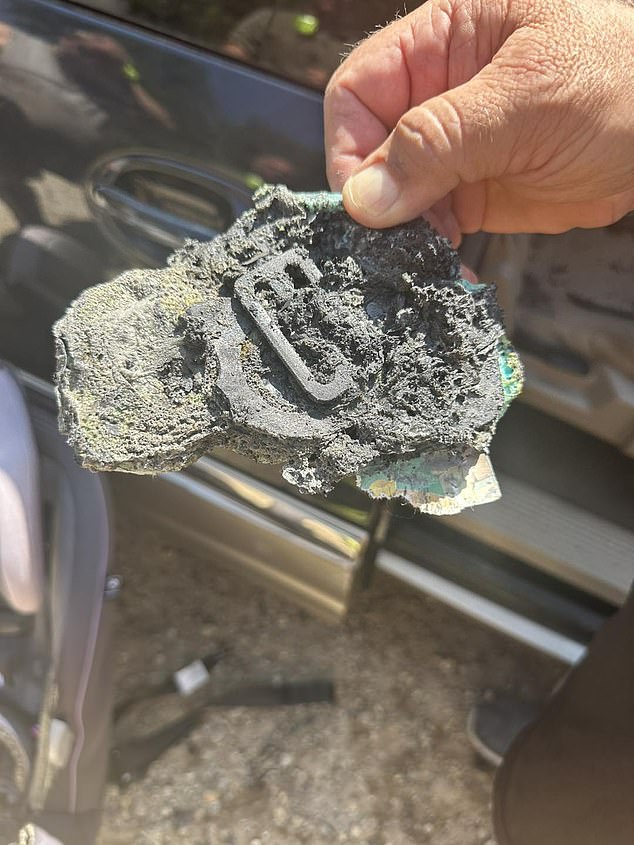Shocking reason child’s car seat spontaneously erupted in flames moments after family had all left the mini van
A child seat spontaneously caught fire shortly after a family got out of the van and went inside.
The fire was noticed by a neighbor who saw smoke coming from the van after the family returned home from church in North Carolina on Sunday.
A family member used a garden hose to extinguish the flames. No one was in the car at the time and there were no injuries.
But photos from the scene showed how the fire had completely melted through the plastic child seat and the leather car seat.
Investigators have now revealed that the shocking reason for the sudden fire was that the small lithium battery in the children’s book overheated.
A child seat in the car spontaneously caught fire moments after the family went inside after returning home from church in North Carolina on Sunday.

Photos from the scene showed how the fire had completely melted through the plastic child seat and the leather car seat

The fire brigade determined that it was a ‘button battery’ in a book that was under the seat that caused the fire
The George Hildebran Fire Department arrived on scene and determined that a button battery in the book under the seat had caused the fire.
Fire Chief Bobby Craig told a news source WSOC: ‘The world itself is switching to lithium batteries, which pose some of these problems for firefighters.
“I don’t know if any precautions were taken, other than trying to keep them cool.”
The fire department has decided to keep the safety seat for training purposes, to demonstrate the danger of lithium batteries.
Lithium-ion batteries, especially poor quality ones, are prone to uncontrolled thermal discharges. These discharges occur when the temperature inside lithium-ion batteries rises faster than the energy can be released to the environment.
The high temperature causes the battery to decompose, generating even more heat and eventually causing an explosion of flammable gas.

A family member used a garden hose to extinguish the flames, but not before the chair was reduced to a smoldering ruin

There was no one in the car at the time and there were no injuries.
They are found in many household products including mobile phones, laptops, tablets, e-scooters, e-bikes and power tools.
The recent increase in the use of lithium-ion batteries has caused a number of industries, including waste management companies, to become confused. Garbage and recycling trucks are causing fires when they grind up improperly discarded batteries.
A number of social media users expressed their concerns about the horrific accident in North Carolina.
Kevin Stamey wrote: “That’s scary folks. Do you know how many kids’ toys and such have batteries in them? Think about it.”
Vickie Smith said, “That’s scary! So many children’s toys and books have batteries. I’m so glad the child wasn’t hurt.”
Faith Vankley commented, “Luckily the child wasn’t burned; that needs to be investigated! Ouch!”
The book, Cocomelon JJ’s Potty Time, was written and published by the company Cottage Door Press, which describes itself as a producer of “high-quality children’s books.”
MailOnline has contacted Cottage Door Press about the incident.
